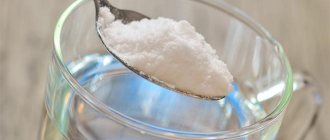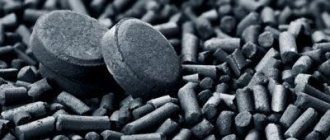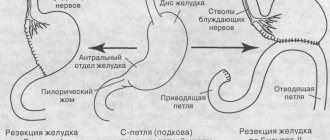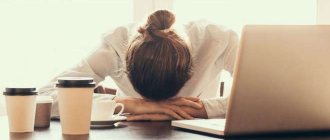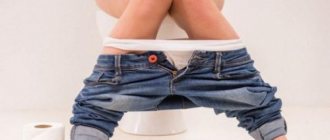Causes and risk factors
All standards are calculated for standard living conditions. However, sometimes even more fluid is needed to prevent dehydration. This primarily applies to people who sweat a lot. And it doesn’t matter what caused it: hot weather, intense training or hormonal imbalances.
You should drink significantly more:
- pregnant women;
- nursing;
- athletes;
- after poisoning accompanied by diarrhea or vomiting;
- after heatstroke;
- during periods of frequent urination.
It is recommended to drink more while on a diet. A person who is losing weight does not receive nutrients in the usual amount. You can’t limit yourself to fluids to avoid metabolic disorders.
Dehydration often accompanies certain diseases. With diarrhea caused by intestinal infections, a large amount of fluid is lost, but alkaline ions are excreted along with it, so acidification of the body, or acidosis, develops. In children, this type of pathology develops rapidly and leads to severe disturbances in the functioning of internal organs. Salmonellosis, cholera and other forms of gastroenteritis can lead to dehydration.
If the disease is accompanied by vomiting, the body loses acid. Therefore, the blood reaction shifts to the alkaline side, which also adversely affects the general condition.
Burns to the surface of the body lead to severe forms of dehydration. In young children, even a 1st degree burn, when hyperemia of an area of the body occurs, may already be accompanied by loss of fluid. With more severe burns, when a bubble with interstitial fluid appears at the site of injury, the body loses a significant amount of blood plasma. A severe form of dehydration develops, which without treatment is fatal.
Loss of fluid is observed in diabetes mellitus, diabetes insipidus, and Addison's disease. Therefore, if left untreated, these pathologies can lead to severe dehydration. The risk increases in older people.
Dehydration can result from uncontrolled use of diuretics. They are prescribed to patients with hypertension, but some women use diuretics to reduce body weight. With constant use of pills, the body loses a lot of fluid and electrolytes, and severe disturbances in the functioning of the heart appear.
Tactics of rehydration therapy for acute intestinal infections in children
The epidemiological situation in the world regarding the incidence of acute intestinal infections (AEI) remains at a consistently unfavorable level (Infectious morbidity in the Russian Federation for January-December 2015 (according to form No. 1 “Information on infectious and parasitic diseases”)) [1, 2] . According to international experts, 95% of children under the age of five experience AEI at least once [3–5]. OCIs also represent a significant economic problem, as was shown in the State report “On the state of sanitary and epidemiological well-being of the population in the Russian Federation in 2014.” The economic damage from acute intestinal infections caused by unidentified infectious pathogens and from food toxic infections of unknown etiology amounted to 12,815,798.5 thousand rubles per year, and for acute intestinal infections of established etiology - 5,864,616.1 thousand rubles per year [6].
An important aspect of the etiological structure of acute intestinal infections in children is currently the change in the dominant pathogens from bacterial to viral, among which the most significant is rotavirus infection [7]. The decree of the Chief State Sanitary Doctor of the Russian Federation G. G. Onishchenko dated March 19, 2010 No. 21 “On the prevention of acute intestinal infections” states: “The increase in recent years in the incidence of acute intestinal infections caused by established bacterial and viral pathogens in the Russian Federation is mainly due to rotavirus infection, the incidence of which for the period 1999–2009. increased almost 7 times. The share of this nosology in the structure of ACI increased from 1.4% to 7.0%. The most affected population during rotavirus infection are children under 14 years of age, making up about 90% of the pathology structure” [8]. This fact leads to a revision of the main therapeutic approaches for acute intestinal infections in children, in particular the correction of dehydration syndrome.
Dehydration syndrome is the leading pathogenetic factor in acute intestinal infections in children, causing the severity of the disease. Therefore, the efficiency and correctness of assessing the degree of dehydration in a child suffering from acute intestinal infections is of particular importance for practical healthcare [9]. Fundamental research by N.V. Vorotyntseva, V.V. Maleev, V.I. Pokrovsky on assessing the severity of dehydration based on an assessment of the patient’s acute loss of body weight remains relevant to this day: degree I exicosis corresponds to a loss of up to 5% of body weight, which is up to 50 ml/kg of fluid, grade II exicosis is a loss of 6–10% of body weight (60–100 ml/kg), grade III exicosis is a loss of more than 10% of body weight (110–150 ml/kg). Dehydration with a loss of body weight of more than 20% is not compatible with life [10]. However, in relation to pediatric practice, determining a child’s body weight deficit due to illness is not always possible due to the rapid growth of children, therefore the assessment of the degree of dehydration is carried out on the basis of clinical data. In this regard, the recommendations of the European Society for Pediatric Gastroenterology Hepatology and Nutrition (ESPGHAN) of 2014 are now widely used [11]. However, they provide for a clinical assessment only of the appearance, condition of the eyeballs and mucous membranes, as well as the presence of tears in the child. The more complete MH Gorelick clinical scale additionally includes determination of capillary reperfusion time (normally no more than 2 seconds), decreased urine output, basic hemodynamic parameters (pulse rate and filling) and indicators of respiratory distress [12]. There are other scales for clinical assessment of the severity of dehydration. However, the significance of each of the symptoms of dehydration in clinical practice may not always be high enough, especially with degree I exicosis, which makes them most applicable for degree II exicosis (Table 1).
With ACI in children, the isotonic type of dehydration predominates, characterized by a proportional loss of fluid and electrolytes, primarily sodium. At the same time, there is no change in the osmotic pressure of water in the intracellular and extracellular spaces, which makes it difficult to determine by laboratory methods [15].
Objectification of the diagnosis of the severity of dehydration in children is possible using an algorithm that includes clinical (increased time of capillary reperfusion, clinically determined dryness of the mucous membranes), anamnestic (severity of diarrhea and vomiting), instrumental (assessment of skin moisture) and laboratory (deficiency of buffer bases in blood serum ) data [16].
Also, one of the important aspects of pathogenesis, which is natural for acute intestinal infections of any etiology, is the development of disorders of the microflora of the gastrointestinal tract (GIT). Previously, it was shown that with Sonne dysentery in 67.8–85.1% of patients, with salmonellosis — in 95.1%, yersiniosis — in 94.9%, rotavirus infection — in 37.2–62.8%, disorders with aspects of the gastrointestinal tract microflora are pronounced [17–19].
Destabilization of the microbiocenosis of the gastrointestinal tract against the background of the course of the infectious process leads to a decrease in the colonization resistance of the microflora, an increase in the severity of inflammatory reactions from the intestinal mucosa and a decrease in the rate of reparative processes in the intestine, which leads to the aggravation of the intoxication syndrome due to the release of toxins not only of pathogenic pathogens, but also representatives opportunistic microflora (OPM), the proportion of which increases in acute intestinal infections [20].
The main pathogenetic aspects of DCI also justify therapeutic approaches - rehydration and probiotic therapy, the duration of the disease and its outcomes depend on the timeliness and adequacy of their administration [10].
With the development of dehydration, the main principle of managing such patients is the rapid replacement of fluid and salt losses, as well as an increase in the buffer capacity of the blood. It is generally accepted that in pediatric practice preference should be given to oral rehydration, as it is less traumatic and more physiological for the child [21]. The international practice of using oral rehydration for acute intestinal infections has been widely used since the 70s of the 20th century, and its inclusion in the standards of patient management has reduced the number of hospitalizations by 50–60% and significantly, by 40–50%, reduced the mortality rate of children [22] . However, the first recommendations that can be attributed to rehydration therapy and include the prescription of rice water, coconut juice and carrot soup date back to a period of more than 2500 years ago and belong to the ancient Indian physician Sushruta [23]. In 1874, in France, Dr. Luton substantiated the prescription of additional water for the treatment of children with acute intestinal infections. For the first time, a solution containing glucose, sodium and chlorine was proposed to be used by Dr. Robert A. Phillips, after the discovery of the mechanism of glucose potentiation of the absorption of sodium and potassium ions in the intestine [23]. In our country, in the 30–50s of the 20th century, methods of rehydration therapy for acute intestinal infections were developed by M. S. Maslov (1928, 1945, 1955), V. I. Morev (1937), V. E. Balaban (1937). The basic principles of oral rehydration, the composition of solutions and methods for organizing care for patients with acute intestinal infections in our country were developed by the Central Research Institute of Epidemiology under the leadership of V. I. Pokrovsky [10].
The general therapeutic approach to oral rehydration involves early administration of rehydration solutions and is carried out in two stages:
- Stage 1 - replenishment of losses that occurred before seeking medical help. A total amount of liquid of 50–80 ml/kg is prescribed for 6 hours;
- Stage 2 - maintenance rehydration, the task of which is to replenish current fluid losses during acute intestinal infections. 80–100 ml/kg of liquid is prescribed per day. The duration of the second stage of oral rehydration continues until recovery or the appearance of indications for parenteral correction of dehydration [24].
According to current modern approaches, for oral rehydration it is recommended to use ready-made solutions balanced in electrolyte composition and osmolarity (75 mEq/L sodium and 75 mEq/L glucose and osmolarity 245 mOsm/L), with the osmolarity of solutions recommended for pediatric application is given great importance.
At the dawn of the introduction of the method into routine clinical practice in 1970, the World Health Organization recommended formulations with a total osmolarity of 311 mmol/L for oral rehydration. Despite their effectiveness in correcting dehydration, the main drawback of these basic solutions was the lack of a positive effect on diarrhea syndrome. One of the advances proposed by WHO in 2004 was to reduce the osmolarity of oral rehydration solutions to 245 mmol/L, and the concentration of sodium to 75 mmol/L and glucose to 75 mmol/L. The fundamental difference between hypoosmolar formulas for oral rehydration is that the previous solutions had higher osmolarity compared to blood plasma, which did not contribute to a decrease in stool volume during diarrhea and could lead to the development of hypernatremia [25–28]. In 2001, Seokyung Hahn conducted a meta-analysis of 15 randomized clinical trials conducted around the world, which showed that the use of oral rehydration solutions with reduced osmolarity optimizes the absorption of water and electrolytes in the intestine to a greater extent than the use of hyperosmolar solutions, while no cases of clinically significant hyponatremia have been reported, except in cases of cholera [29].
It has also been shown that this type of solution reduces the need for infusion therapy, reduces the severity of diarrhea and vomiting, and makes it possible to reduce the volume of solutions during oral rehydration, which is an important advantage for pediatrics [16].
It is necessary to take into account that correction of dehydration should be carried out using salt-free solutions, among which preference should be given to drinking water (not mineral!), it is possible to use pectin-containing infusions (apple compote without sugar, carrot-rice infusion). The ratio of glucose-salt solutions and drinking water should be 1:1 for watery diarrhea, 2:1 for severe vomiting, 1:2 for invasive diarrhea [24].
Severe forms of acute intestinal infections, lack of effect from oral rehydration or the presence of profuse vomiting, edema, development of functional (acute) renal failure are indications for parenteral rehydration, which can be carried out using one of the modern domestic solutions - 1.5% solution of meglumine sodium succinate , which has proven its effectiveness in intensive therapy of these conditions [30].
The pathogenetic rationale for the need to use probiotic drugs for acute intestinal infections is beyond doubt in both domestic and foreign literature. Probiotic therapy is recommended to be prescribed as part of complex initial therapy, regardless of the etiology of the disease and as early as possible. These drugs are also indicated for all patients during the period of convalescence in order to restore microbiocenosis parameters. Their use in acute intestinal infections in children is not only pathogenetically substantiated, but also refers to the highest level of evidence - A - in accordance with the principles of evidence-based medicine [31]. This fact was confirmed in 2010 by the results of a meta-analysis that included the results of 63 randomized controlled clinical trials. It showed that the use of probiotics significantly reduces the duration of diarrhea by an average of 24.76 hours and reduces stool frequency, while these drugs are characterized by a high safety profile [32].
One of the pathogenetic mechanisms that make it possible to recommend probiotics for acute intestinal infections is their positive effect on the mucin layer of the gastrointestinal mucosa. Against the background of the course of the infectious process, a change in the physical characteristics of this barrier is observed - a decrease in viscosity due to the destruction of disulfide bonds between the cysteine bridges of the superstructure of this gel, which can lead to the translocation of microorganisms from the intestinal lumen into the tissue. These processes develop under the influence of pathogenic microorganisms that have corresponding pathogenicity factors in the form of enzymes that destroy mucus (neuraminidase, hyaluronidase, mucinase). Long-term changes in the physical properties of the mucin layer, including in the post-infectious period, lead to the risk of developing inflammatory bowel diseases [33]. Microorganisms belonging to the components of the normal microflora of the human gastrointestinal tract, as well as their metabolic products, have a potentiating effect on the state of the mucin layer through a number of mechanisms, including genetic ones [34, 35].
The modern view of probiotic therapy involves a strain-specific approach, which includes establishing in clinical studies the therapeutic effects characteristic of certain genetically certified strains and their further use, taking into account the strain-specific properties of probiotics in various clinical situations [36, 37].
With regard to acute intestinal infections in children, the ESPGHAN working group in 2014, based on an analysis of published systematic reviews and the results of randomized clinical trials, including placebo-controlled ones, published a memorandum in which it divided all probiotic strains into probiotics with a positive recommendation and those with a negative one. recommendation and probiotics with insufficient evidence of their effectiveness. The recommended strains (despite the low level of evidence according to experts) for the treatment of acute intestinal infections in children included Lactobacillus GG, Saccharomyces boulardii, Lactobacillus reuteri strain DSM 17938 (original strain ATCC 55730), as well as the thermally inactivated strain Lactobacillus acidophilus LB, which is formally cannot be classified as probiotics as living microorganisms with specified beneficial properties, however, they have shown their effectiveness in acute infectious gastroenteritis [38].
Lactobacillus reuteri DSM 17938 is one of the most studied strains. This microorganism is authentic to the human body - it is found in human breast milk, lives in the human colon, and is found in the oral cavity, stomach, small intestine, and vagina. In the human intestine, Lactobacillus reuteri produces an antimicrobial substance - “reuterin”, which inhibits the growth of Escherichia spp., Salmonella spp., Shigella spp., Proteus spp., Pseudomonas spp., Clostridium spp. and Staphylococcus spp., as well as some yeasts and viruses [39].
The Lactobacillus reuteri strain DSM 17938 is resistant to the following antimicrobial agents (it is possible to take Lactobacillus reuteri Protectis probiotics together with these agents): amoxicillin, ampicillin, Augmentin, dicloxacillin, oxacillin, penicillin G, phenoxymethylpenicillin, cefuroxime, cephalothin, vancomycin, xicycline, tetracycline, fusidic acid , ciprofloxacin, enrofloxacin, nalidixic acid, metronidazole. Lactobacillus reuteri DSM 17938 is sensitive to cefotaxime, neomycin, streptomycin, clarithromycin, erythromycin, roxithromycin, clindamycin, chloramphenicol, rifampicin, imipenem, linezolid, virginiamycin.
At the same time, Lactobacillus reuteri DSM 17938 is characterized by a good safety profile, which was confirmed by the Food and Agriculture Organization of the United Nations (FAO) and WHO in 2002.
The clinical effectiveness of Lactobacillus reuteri DSM 17938 is shown for functional colic in children of the first year of life, as part of complex eradication therapy for H. pylori infection, prevention of antibiotic-associated diarrhea, metabolic syndrome, and in the treatment of allergic diseases. The effectiveness of this strain has been confirmed in 163 clinical studies in 14,000 patients, of which 114 were randomized, double-blind or blind placebo-controlled studies, 47 were open studies, 56 studies were conducted among 7,300 children 0–3 years of age.
However, the clinical effects of this strain in acute intestinal infections have been most well studied, which was the reason for its inclusion in the ESPGHAN recommendations. Thus, in a multicenter, randomized, single-blind clinical trial conducted among children hospitalized with acute gastroenteritis who received traditional therapy with or without 1 × 108 CFU of Lactobacillus reuteri DSM 17938 for 5 days, it was shown that the administration of this probiotic strain reduces the duration of diarrhea after 24 and 48 hours (50% in the main group versus 5% in the comparison group, p < 0.001) and 72 hours (69% versus 11%, p < 0.001), allows to reduce the length of hospitalization (4.31 ± 1.3 days versus 5 .46 ± 1.77 days, p < 0.001) and reduce the likelihood of developing prolonged diarrhea (17% in the comparison group and not a single patient in the main group) [40]. Similar data were obtained in other studies [41, 42].
Considering the above, we can conclude that currently in the Russian Federation the only low-osmolar glucose-salt rehydration solution containing Lactobacillus reuteri DSM 17938 is BioGaia ORS (dietary supplement). This solution has a therapeutic effect in two main pathogenetic directions - to correct both dehydration and microbiocenosis disorders in acute intestinal infections in children. It is important to emphasize that, in addition to glucose, salts and probiotics, BioGaia ORS contains zinc, which has a positive effect on water absorption, which also potentiates the processes of immunological defense and is involved in regeneration processes.
In terms of composition and osmolarity, the combination of BioGaia ORS salts complies with the recommendations of the European Society of Pediatrics, Gastroenterologists and Dietitians, as well as WHO and UNICEF for oral rehydration for mild and moderate degrees of dehydration (Table 2).
The effectiveness of this combination - Lactobacillus reuteri DSM 17938 and oral rehydration solutions - was confirmed in a prospective placebo-controlled study, which showed an 84% reduction in the proportion of children with dehydration on the second day of taking this combination [43].
Thus, combination therapy with a probiotic and a low-osmolar solution for oral rehydration (BioGaa ORS) in children without age restrictions is not only pathogenetically substantiated, having proven its undoubted effectiveness and safety in controlled clinical studies, but also the most promising direction in the treatment of acute diarrhea of any etiology, significantly reducing polypharmacy.
Literature
- Electronic resource. Access mode: https://www.rospotrebnadzor.ru/activities/statistical-materials/statictic_details.php? ELEMENT_ID=5525 — (access date 02/10/2016).
- Ayoub D., Lopetuso LR, Chamseddine F., Dajani A., Lahiri K., Mahmoud H., Miqdady MS, Zirizzotti G., Sultan MA, Franceschi F., Gasbarrini A. Epidemiological evaluation of acute gastroenteritis and therapeutic approaches in Middle East Countries // Eur Rev Med Pharmacol Sci. 2016, Sep; 20 (18): 3891–3901.
- Estimated rotavirus deaths for children under 5 years of age // https://www.who.int/immunization/monitoring_surveillance/burden/estimates/rotavirus/en/. Date of access: 08/24/2016.
- Liu L., Qian Y., Zhang Y., Zhao L., Jia L., Dong H. Epidemiological aspects of rotavirus and adenovirus in hospitalized children with diarrhea: a 5-year survey in Beijing // BMC Infect Dis. 2016, Sep 23; 16(1):508.
- Nguyen TV, Le Van P., Le Huy C. et al. Diarrhea caused by rotavirus in children less than 5 years of age in Hanoi, Vietnam // J Clin Micriobiol. 2004. Vol. 76 (12). P. 5745–5750.
- On the state of sanitary and epidemiological well-being of the population in the Russian Federation in 2014: State report. M.: Federal Service for Supervision of Consumer Rights Protection and Human Welfare. 2015. 206 p.
- Podkolzin A. T. Epidemiological and clinical characteristics of acute intestinal infections of viral etiology in the Russian Federation. Author's abstract. diss. for the job application uch. Art. Doctor of Medical Sciences M., 2015. 46 p.
- Resolution of the Chief State Sanitary Doctor of the Russian Federation dated March 19, 2010 No. 21 “On the prevention of acute intestinal infections” // Russian newspaper. 2010 (April 30). P. 21.
- Guarino A., Lo Vecchio A., Zakharova I.N., Sugyan N.G., Israilbekova I.B. Tactics of management of children with acute gastroenteritis at the prehospital stage: implementation of international recommendations into pediatric practice // Russian Medical Journal. 2014; 21: 1483–1488.
- Maleev V.V., Gorelov A.V., Usenko D.V., Kuleshov K.I. Current problems, results and prospects for studying acute intestinal infections // Epidemiology and infectious diseases. 2014. No. 1. P. 4–8.
- Guarino A., Ashkenazi S., Gendrel D., Lo Vecchio A., Shamir R., Szajewska H. European Society for Pediatric Gastroenterology, Hepatology, and Nutrition; European Society for Pediatric Infectious Diseases. European Society for Pediatric Gastroenterology, Hepatology, and Nutrition/European Society for Pediatric Infectious Diseases evidence-based guidelines for the management of acute gastroenteritis in children in Europe: update 2014 // J Pediatric Gastroenterol Nutr. July 2014; 59 (1): 132–52. DOI: 10.1097/MPG.0000000000000375.
- Gorelick MH, Shaw KN, Murphy KO Vaildity and reliability of clinical signs in the diagnosis of dehydration in children // Pediatrics. 1997; 99(5):E6.
- Kimberly Pringle at al. Comparing the accuracy of the three popular clinical dehydration scales in children with diarrhea // Int J Emerg Med. 2011; 4: 58. Published online 2011 Sep 9.
- Adam C. Levine at al. Prediction of Severe Disease in Children with Diarrhea in a Resource-Limited Setting // PLoS One. 2013; 8(12):e82386. Published online 2013 Dec 3.
- Aizenberg V.L., Vorotyntseva N.V., Bogachev V.F., Kadyrov A.S. Pathogenesis and intensive therapy of toxic-dystrophic syndrome in young children // Anesthesiology and Reanimatology. 1996; 6: 17–20.
- Ploskireva A. A., Gorelov A. V. Dehydration syndrome in acute intestinal infections in children: new approaches to diagnosis // Infectious diseases. 2016. T. 14. No. 4. pp. 44–50.
- Kramar L.V., Rodionova N.V., Arova A.A. Microecological features of the intestinal biocenosis of children of the first year of life with acute intestinal infections // Fundamental Research. 2014. No. 2. pp. 90–93.
- Bitieva R. L. Evaluation of new approaches to the diagnosis and treatment of rotavirus infection in children. Author's abstract. dis. ... Ph.D. M., 2007.
- Zheleznova L. I. Clinical and laboratory features of microecological disorders of the colon mucosa during acute intestinal infections in children. Author's abstract. for the job application uch. Art. Ph.D. St. Petersburg, 2006. 24 p.
- Shenderov B. A. Medical microbial ecology and functional nutrition. T. 3. Probiotics and functional nutrition. M.: GRANT, 2001. 286 p.
- Sack DA, Chowdbury A., Euso FA Oral rehydration in rotavirus diarrhea: a double blind comparison of sucrose with glucose electrolyte solution // Lancet. 1978, II, 80–82.
- Mahalanabis D. Development of an Improved Formulation of Oral Rehydration Salts (ORS) with Antidiarrheal and nutritional Properties: A “Super ORS.” In: Development of Vaccines Drugs against Diarrhoea. J. Holmgren, A. Lindberg & R. Mollmy (Eds), 11th Nobel Conference, Stockholm, 1985. Lund, Sweden: Studentliteratur, 1986, p. 240–256.
- Ruxin JN Magic bullet: the history of oral rehydration therapy // Medical History. 1994. 38 (4): 363–397.
- Gorelov A.V., Milyutina L.N., Usenko D.V. Clinical guidelines for the diagnosis and treatment of acute intestinal infections in children. A manual for doctors. M., 2005. 106 p.
- World Health Organization. International study group on reduced-osmolarity ORS solutions. Multicentre evaluation of reduced-osmolarity oral rehydration salts solution // Lancet. 1995; 345. P. 282–285.
- Hahn S., Kim Y., Garner P. Reduced osmolarity oral rehydration solution for treating dehydration due to diarrhea in children: systematic review // BMJ. 2001; 323:81–85.
- Alam NH Symptomatic Hyponatremia During Treatment of Dehydrating Diarrheal Disease With Reduced Osmolarity Oral Rehydration Solution // JAMA. Aug. 2, 2006; 296:567–573.
- Kimberly P. Comparing the accuracy of the three popular clinical dehydration scales in children with diarrhea. UNICEF: New formulation of Oral Rehydration Salts (ORS) with reduced osmolarity. Retrieved 2009–02–16 // Int J Emerg Med. 2011; 4:58.
- Hahn S., Kim Y., Garner P. Reduced osmolarity oral rehydration solution for treating dehydration caused by acute diarrhoea in children // Cochrane Database Syst Rev (2): https://onlinelibrary.wiley.com/doi/10.1002/14651858 .CD002847/abstract; jsessionid =17D131F17917F3A78F2BF3A5E06A3B6F.f04t02-Date of access: 08/28/2016.
- Ploskireva A. A., Gorelov A. V., Zhuchkova S. N. et al. Modern approaches to intensive care of acute intestinal infections in children // Infectious diseases. 2012; 10 (1): 50–55.
- Kligler B., Cohrssen A. Probiotics // Am Fam Physician. 2008, Nov 1; 78(9):1073–1078.
- Allen SJ, Martinez EG, Gregorio GV et al. Probiotics for treating acute infectious diarrhea // Cochrane Database Syst Rev. 2010; CD003048.
- González-Castro AM, Martínez C., Salvo-Romero E., Fortea M., Pardo-Camacho C., Pérez-Berezo T., Alonso-Cotoner C., Santos J., Vicario M. Mucosal pathobiology and molecular signature of epithelial barrier dysfunction in the small intestine in Irritable Bowel Syndrome // J Gastroenterol Hepatol. 2016, Apr 18.
- Hutsko SL, Meizlisch K., Wick M., Lilburn MS Early intestinal development and mucin transcription in the young poult with probiotic and mannan oligosaccharide prebiotic supplementation // Poult Sci. 2016, May; 95(5):1173–8. DOI: 10.3382/ps/pew019.
- Mattar AF, Teitelbaum DH, Drongowski RA, Yongyi F., Harmon CM, Coran AG Probiotics up-regulate MUC-2 mucin gene expression in a Caco-2 cell-culture model // Pediatr Surg Int. 2002, Oct; 18(7):586–590.
- Szajewska H. Advances and limitations of evidence-based medicine-impact for probiotics // Ann Nutr Metab. 2010; 57 (suppl): 6–9.
- Rijkers GT, Bengmark S, Enck P et al. Guidance for substantiating the evidence for beneficial effects of probiotics: current status and recommendations for future research // J Nutr 2010; 140:S671–S676.
- Szajewska H., Guarino A., Hojsak I., Indrio F., Kolacek S., Shamir R., Vandenplas Y., Weizman Z. Use of probiotics for the management of acute gastroenteritis: a position paper by the ESPGHAN Working Group for Probiotics and Prebiotics // J Pediatr Gastroenterol Nutr. 2014 Apr; 58(4):531–539.
- Talarico TL, Casas IA, Chung TC, Dobrogosz WJ Production and isolation of reuterin, a growth inhibitor produced by Lactobacillus reuteri // Antimicrobial Agents and Chemotherapy. 1988, 32(12): 1854–1858. DOI: 10.1128/aac.32.12.1854. PMC 176032. PMID 3245697. Retrieved 2015–01–19.
- Dinleyici EC, PROBAGE Study Group., Vandenplas Y. Lactobacillus reuteri DSM 17938 effectively reduces the duration of acute diarrhea in hospitalized children // Acta Paediatr. July 2014; 103(7):e300–305. DOI: 10.1111/apa.12617. Epub 2014 Mar 24. PMID: 24579935.
- Francavilla R., Lionetti E., Castellaneta S., Ciruzzi F., Indrio F., Masciale A., Fontana C., La Rosa MM, Cavallo L., Francavilla A. Randomized clinical trial: Lactobacillus reuteri DSM 17938 vs. placebo in children with acute diarrhea - a double-blind study // Aliment Pharmacol Ther. 2012 Aug; 36 (4): 363–9. DOI: 10.1111/j.1365–2036.2012.05180.x. Epub 2012 Jun 11. PMID: 22680836.
- Urbanska M., Szajewska H. The efficacy of Lactobacillus reuteri DSM 17938 in infants and children: a review of the current evidence // Eur J Pediatr. 2014 Oct; 173(10):1327–1337. DOI: 10.1007/s00431–014–2328–0. Epub 2014 May 13. Review. PMID: 24819885.
- Eom T.-H., Oh E.-Y., Kim Y.-H., Lee H.-S., Yang P.S., Kim D.-U., Kim J.-T., Lee B.-C. . The therapeutic effect of Lactobacillus reuteri in acute diarrhea in infants and toddlers // Korean J Ped. 2005. 48: 986–989.
A. A. Ploskireva1, Candidate of Medical Sciences A. V. Gorelov, Doctor of Medical Sciences, Professor, Corresponding Member of the Russian Academy of Sciences
FBUN TsNIIE Rospotrebnadzor, Moscow
1 Contact information
How much water does the body need?
There are many opinions on this matter. At the same time, myths appear, following which can be harmful to health. According to experts from the World Health Organization, there cannot be a single standard of water consumption for all people.
Discard unsubstantiated recommendations that you need to drink two to three liters a day or eight glasses, not taking into account tea, coffee and liquids from food. When determining the individual norm, one should rely on body weight and age.
For every kilogram of weight you need:
- children weighing up to 10 kg – 4 ml of water per hour;
- children weighing up to 20 kg – 1000-1500 ml per day;
- adults and adolescents heavier than 20 kg – 1500 ml per day for the first 20 kg + 20 ml for each subsequent kilogram.
If a person weighs 50 kg, then 1500 ml + 20 ml * 30 kg = 2100 ml of liquid per day is required. But you shouldn’t limit or force yourself. You feel thirsty - drink, you can’t swallow another drop - forget about the numbers. The body knows best when it needs water.
Other drinks that support water and micronutrient balance
If there are no medications at hand to replenish fluid, folk remedies are used:
- Rich green tea is great for relieving nausea.
- Rice water promotes the formation of thicker stools. For 1 liter of water, pour 1 tablespoon of rice into a pan. Boil until tender, infuse and filter.
- A decoction of maple leaves also helps overcome vomiting. To prepare it, leave it in a water bath for about 2 hours.
- A drink with ginger also has a positive effect. To do this, the root is crushed and kept for 5 minutes over low heat.
- Raisin decoction. Take 1 tbsp. spoon of raw materials and brew in 200 ml of boiling water, then leave in a water bath for at least 3 hours.
- A self-prepared product to prevent dehydration and replenish mineral salts. For it, take 1 liter of warm boiled water, 1 teaspoon of table salt and 1 incomplete tablespoon of sugar. They drink like regular Regidron.
When the stomach is ready to accept something from food, prepare a clear broth using chicken or beef, or maybe vegetable broth. This way you can minimize dehydration during diarrhea in children and adults. The broth perfectly restores water balance and provides a person with nutrients.
After the digestive system accepts the broth, they switch to soft foods with little fat. These are crackers, gelatin products, toast.
Diagnosis of dehydration
It is a mistake to believe that thirst is a sign of dehydration. The body, long before entering a pathological state, begins to signal the need to replenish reserves.
The simplest test for fluid content in the body. Pinch the skin on the back of your hand. If the fold straightens out immediately, there is enough water; if it persists, it’s time to drink.
The kidneys process a maximum of 100 ml per hour, so under normal conditions it is not so easy to bring yourself to dehydration. If a person finds himself in a situation where he is deprived of any sources of fluid, his body will react with specific symptoms:
- loss of body weight (more than three percent);
- pale skin;
- sunken eyes;
- decrease in temperature;
- increased heart rate;
- decreased volume of urine or its complete absence;
- lack of saliva;
- swollen tongue;
- difficulty swallowing;
- cold sweat.
In such a situation, the blood thickens and the acid-base balance is disturbed. It is important to establish a complete picture of biochemical changes for proper restoration of the body.
The diagnosis of dehydration is not independent; it accompanies a disease that has led to excessive fluid loss. Therefore, special diagnostic methods are rarely used. In severe patients who have been in hospital for a long time, control weighing is used. If there is a sudden loss of body weight and additional symptoms, dehydration is suspected. Control weighing can be used for athletes during intense training.
Dehydration is accompanied by loss of blood electrolytes and changes in acid-base balance. Therefore, when symptoms appear, a biochemical study of blood electrolytes, urea and nitrogen is carried out. If a state of metabolic alkolosis (alkalinization) is observed, then it is necessary to know the levels of chlorides in the urine.
In case of cardiac or chronic renal failure, both dehydration itself and the subsequent sharp increase in the volume of fluid in the blood are dangerous. Therefore, such patients undergo invasive measurements of central venous pressure and pulmonary artery wedge pressure.
Diagnosis of dehydration by the level of electrolytes in urine and its osmolality is not always informative. In patients with healthy kidneys, sodium is retained well in the body for a long time, so it does not appear in the urine in high concentrations.
If dehydration is combined with metabolic alkolosis, the kidneys excrete more sodium to remove excess bicarbonate, which alkalinizes the blood.
How to prevent fluid loss
It is very important to learn in time how to avoid dehydration during diarrhea:
- To begin with, drink liquid often, but in small portions and small sips, so as not to provoke vomiting.
- For diarrhea, you can take an over-the-counter medicine called Nifuroxazide. Take the drug according to the instructions for no more than 7 days. It can be given to children from 6 years of age. It will help suppress pathogenic microbes and eliminate the cause of diarrhea.
- Taking rehydration medications helps.
The most famous medicine for dehydration due to diarrhea is Regidron . This is a white powder for obtaining a water-salt solution. With its help, fluid balance is restored after diarrhea. It consists of potassium chloride, sodium chloride, dextrose and sodium citrate. 1 sachet of Regidron is diluted in 1 liter of boiled water at room temperature.
Drink the medicine in small sips after each attack of diarrhea. Shake the solution before using the next portion. The volume of 1 packet of liquid should be drunk within 1-3 hours. If signs of dehydration disappear, the amount can be reduced and the breaks in taking taken longer.
The second remedy for dehydration with severe diarrhea is Oralit . The medicine helps restore electrolyte balance. Oralite has the form of a ready-made solution. The product consists of the following components: potassium chloride, sodium chloride, sodium bicarbonate and distilled water. For infants, the product is diluted with water or tea, while adults and older children take it undiluted. The dosage for adults is 10 ml every 15 minutes.
The next medicine is Normohydron . It is an odorless white powder that is used to correct dehydration and electrolyte deficiency. It contains sodium chloride, sodium citrate, potassium chloride and anhydrous glucose. It is dissolved in the same way as Regidron: 1 sachet per 1 liter of boiled water. Drink 2 times more than the amount of fluid lost.
If you compare these drugs, you will notice a slight difference in composition. In this case, the function is the same - filling the body with fluid and mineral salts, which a person also loses during diarrhea.
Complications from dehydration
The greatest danger is dehydration in children and the elderly. The child’s body contains a large amount of fluid, so a loss of just 10% already leads to severe disruptions in the functioning of internal organs.
Regardless of the causes of dehydration, vital ions are lost, which are responsible for maintaining acid-base balance in the body and participate in the contraction of the heart muscle. Fluid loss leads to decreased renal blood flow. In response, the kidneys release the hormone vasopressin, which causes vasospasm throughout the body and increases blood pressure.
Blood flow to vital organs increases, but due to the redistribution of blood, other organs do not receive the required amount of oxygen and nutrients, and there are risks of disruption to their functioning. Gradually, blood pressure drops, blood supply to the heart muscle decreases, and the pumping function of the heart worsens. This leads to an even greater decrease in blood pressure and the development of ischemia of the kidneys, lungs, and brain.
This is how hypovolemic shock is formed. This condition is characterized by:
- weakness;
- pale skin;
- slow and muffled heartbeat;
- mental disorders, sometimes pathological agitation;
- clouding of consciousness;
- coma.
If left untreated, hypovolemic shock may result in DIC syndrome. This is disseminated intravascular coagulation. Complications of dehydration result in death.
Types and degrees of dehydration
Dehydration should not be allowed. If such a process has begun, then treatment must be carried out urgently, depending on the type and stage. There are three types in total:
- Isotonic (the salt composition of the blood remains normal);
- Hypertensive (increased levels of salts are observed in the blood);
- Hypotonic (low levels of salts are observed in the blood).
Isotonic dehydration can occur as a result of prolonged exposure to the sun. The next two types develop as a result of pathological changes. Dehydration makes itself felt almost immediately, but it can develop over several days, increasing the stage.
What kind of water is best to drink?
Store shelves and catering chains offer us a fairly extensive selection of drinks.
Carbonated drinks often attract our attention It must be remembered that their pleasant taste hides insidious excess calories and sugar. That's right - read the packaging and evaluate each time why I buy and drink this drink.
This problem is especially relevant for developed countries, because many people drink drinks not to quench thirst, but due to “close availability” and to obtain pleasant taste sensations, stimulation of the nervous system with caffeine and sugar, or for relaxation due to alcohol. The sports industry also invented a new type of soft drink: sports drinks. However, most experts are very skeptical about the benefits of sports drinks for maintaining fluid balance and improving training results.
Fruit juices contain fruit pulp and a significant amount of water, which also quenches thirst. It is correct to consume natural freshly squeezed juices, if necessary, with the addition of clean water. Industrially produced juices may contain sugar and preservatives, the frequent consumption of which can have a harmful effect on health.
In order to maintain well-being and health, it is recommended to drink clean water, low-mineralized water (up to 2-2.5 grams of minerals per liter), weak black and green tea, herbal teas (chamomile, peppermint, fireweed). Remember that drinking green tea with milk has a mild diuretic effect and will help save you from feeling puffy and heavy in your legs.
Debunking the Myths
Many publications on the Internet contain myths regarding dehydration:
Myth No. 1.
To moisturize the skin, fight wrinkles and improve the condition of the skin, you need to drink 8 cups of water a day.
The fact is that drinking additional fluid by people who are healthy and already drink enough water does not improve the condition of the skin. The body will remove excess fluid naturally, which will not affect the elasticity of your skin. It is correct to assess the fluid requirement of your body, taking into account the intensity of physical activity and the presence of any pathological processes in the body, and then select moisturizing creams with a cosmetologist.
Myth No. 2.
In addition to drinks, you should drink plain water to avoid dehydration.
Medical research shows that the lack of water can be compensated not only with ordinary water, but also with juices, herbal teas, soups, broths, etc. However, in case of significant dehydration it is necessary to drink water , as this will quickly restore the water-salt balance in the body without consuming additional calories.
Myth No. 3.
Darkening of urine clearly indicates dehydration.
Indeed, when there is a lack of water in the body, the excreted urine concentrates and it becomes a little darker. However, dark urine can also occur when eating certain types of food, such as beets, asparagus and other foods, and can also be a symptom of liver and kidney diseases.
Myth No. 4.
Experts have established the exact daily volume of water a person needs.
Unfortunately, there is no magic exact dose that is equally good for everyone. We are all unique and live our own unique lives. Although researchers are still continuing to work to determine the optimal amounts of water consumption for both healthy people and various groups of patients.
